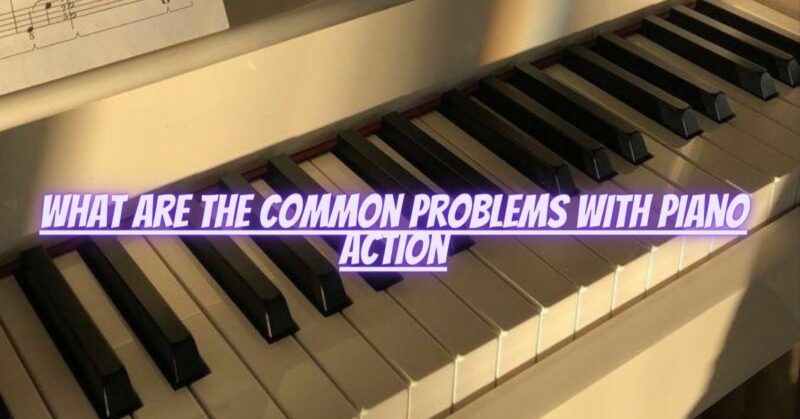The piano action is a complex mechanical system responsible for translating the pianist’s keystrokes into sound. Due to its intricate nature, various issues may arise over time that can affect the instrument’s playability and performance. Understanding these common problems and knowing how to address them is crucial for maintaining a well-functioning piano action. In this article, we’ll explore some typical piano action problems and their potential solutions.
1. Sticky or Stuck Keys: Sticky or stuck keys occur when the keys do not return to their resting position after being pressed. This issue may result from accumulated dirt, debris, or worn-out action components.
Solution: Clean the keyboard and action thoroughly to remove any dirt or debris. If the problem persists, seek assistance from a professional piano technician who can inspect and repair the action components as needed.
2. Uneven Key Response: Uneven key response means that certain keys may feel heavier or lighter when played compared to others. This inconsistency can disrupt a pianist’s playing experience and affect the overall sound produced by the instrument.
Solution: Adjust the key leads, key weights, and balance rail punchings to achieve a more uniform key response. Professional regulation of the action can help ensure that all keys respond consistently and evenly.
3. Squeaky or Noisy Keys: Squeaky or noisy keys can be distracting and impact the piano’s tone. These sounds are often caused by friction between action components or worn-out parts.
Solution: Lubricate the action with a suitable lubricant to reduce friction and eliminate squeaks. If the noise persists, consult a piano technician to identify and replace any worn or damaged action components.
4. Slow or Sluggish Action: A slow or sluggish action occurs when the keys do not return to their resting position quickly enough. This problem can hinder a pianist’s ability to play with speed and agility.
Solution: Clean and lubricate the action to reduce friction. If the action remains sluggish, a piano technician can perform more in-depth regulation to improve the key responsiveness.
5. Uneven Hammer Alignment: Uneven hammer alignment can lead to inconsistent tone and volume across the keyboard. The hammers may strike the strings at varying angles, affecting the sound quality.
Solution: A professional piano technician can adjust and align the hammers properly, ensuring that they strike the strings uniformly for a balanced and consistent tone.
6. Loose or Broken Action Parts: Over time, action parts can become loose or damaged, affecting the piano’s playability and responsiveness.
Solution: Regularly inspect the action for any loose or broken parts. If you identify any issues, consult a piano technician for proper repair or replacement.
Conclusion: Piano action problems can arise due to various factors, including age, wear, and environmental conditions. Regular maintenance and prompt attention to issues are essential for keeping the action in optimal condition. While some minor problems can be addressed through cleaning and lubrication, more significant issues may require the expertise of a qualified piano technician. A well-maintained and properly regulated piano action ensures a smooth and enjoyable playing experience, allowing pianists to focus on their music and bring out the best in their performance.


